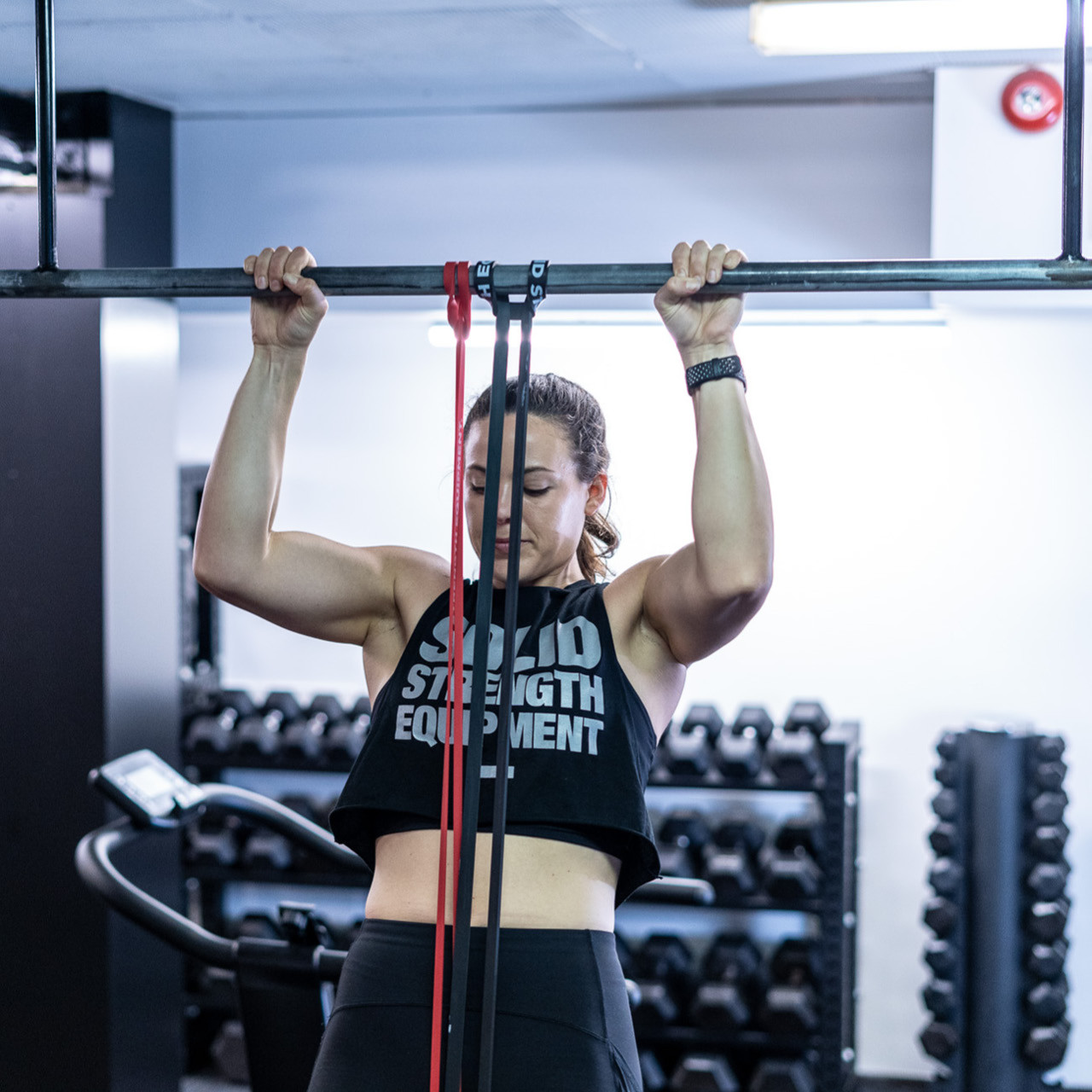Resistance Bands 101: How to Choose the Right Band for Your Workout
Posted by Solid Strength Equipment on 27th May 2025
Resistance Bands 101: How to Choose the Right Band for Your Workout
Whether you're building a home gym, training on the go, or improving your mobility, resistance bands are one of the most versatile tools you can own. But with so many options — from loop bands to fabric bands, light to heavy — it can be hard to know which band is right for you.
In this beginner’s guide, we’ll break down the types of resistance bands, explain what each level is good for, and help you choose the right one for your fitness goals.
Why Use Resistance Bands?
Resistance bands provide a joint-friendly, highly portable way to build strength, improve flexibility, and support injury prevention or recovery. Unlike weights, they allow for variable resistance and dynamic movement patterns — perfect for warm-ups, accessory lifts, or full-body workouts.

Types of Resistance Bands
1. Power Bands (Latex Loop Bands)
These long, continuous loop bands come in varying widths to change the resistance level. We offer a set of five:
- Red (XX-Small): 13mm – Ideal for warmups and mobility work
- Black (X-Small): 18mm – Great for light resistance exercises and glute work
- Purple (Small): 28mm – Suitable for squats, presses, and glute activation
- Green (Medium): 44mm – Used for assisted pull-ups and strength training
- Blue (Large): 61mm – Heavy resistance for advanced lifts and support
2. Fabric Loop Bands (Booty Bands)
These shorter, wider bands are designed for targeted muscle activation in your lower and upper body. Commonly used in yoga, pilates, HIIT sessions, injury rehab and more, these booty band sets are an easy, lightweight addition to your gym kit and will take your workout or physio to the next level. Our Booty Band Set includes three fabric bands:
- Light Grey (Light): ~11–13kg – Best for glute bridges and activation
- Dark Grey (Medium): ~15–17kg – Ideal for squats and side steps
- Black (Heavy): ~20–23kg – Perfect for high-resistance band workouts
These feature a grippy fabric underside to prevent rolling and come with a carry bag for convenience.

Most Bands Can Do the Same Exercises — It’s About Progression
You don’t need a different band for every movement — most exercises can be done with almost any band. The key is matching the resistance level to your current strength and knowing how to adjust the tension as you progress.
For example, a red band may be perfect for band pull-aparts or shoulder warm-ups, but it won’t offer much support if you’re trying to do assisted pull-ups — it’s simply not strong enough to make a difference.
But here's where resistance bands shine: you can scale almost any movement by increasing the distance under tension. The further you stretch the band, the more resistance it provides — no need to swap bands.
Practical examples of "distance = resistance":
Banded rows: Step back from your anchor point to make the row harder and fully engage your back.
Banded squats: Loop a band under your feet and over your shoulders — then widen your stance to increase the stretch and load.
Overhead presses: If the band is looped under your feet, stepping wider increases the resistance at the top of the press.
Lat pulldowns (with a band anchored above): Kneel or sit further back from the anchor point to add more pull resistance and increase time under tension.
How Band Resistance Works Differently
Unlike dumbbells or kettlebells, resistance bands don’t provide the same load throughout the range of motion. Resistance increases as the band stretches. This means:
- You’ll feel more challenge at the top of a movement (where you're typically stronger)
- Less joint strain at the bottom of the movement (where injuries often occur)
- Better strength development in your end ranges
It's a different kind of stimulus — and a great complement to free weights.
What Resistance Bands Can’t Do
- They aren’t ideal for heavy powerlifting (e.g., 150kg+ deadlifts)
- They don’t provide constant resistance across the full range like machines do
- They rely on good setup and form — incorrect use can reduce their effectiveness
But for warm-ups, rehab, mobility, or adding resistance to bodyweight moves, resistance bands are unmatched in value, portability, and versatility.
Choose Progression Over Perfection
You don’t need to buy a dozen different bands. Start with one set, figure out what works for you, and use progression methods like:
- Increasing the stretch (distance under tension)
- Slowing the tempo of each rep
- Controlling the range of motion more precisely
Resistance bands don’t just replace weights — they open up smarter, more flexible ways to train.

Frequently Asked Questions
We offer two types of resistance bands: power bands (long latex loops) and fabric bands (short, wide loops). Power bands are ideal for strength training, assisted pull-ups, and mobility work. Fabric bands are great for glute activation, rehab, and pilates-style exercises.
Choose a thicker latex loop band like the green or blue band for assisted pull-ups. These provide the most support and will help you build strength over time. As you improve, you can progress to thinner bands like purple or black.
Yes! Resistance bands create tension throughout your range of motion, which helps activate and strengthen muscles. With proper form and progressive overload, bands can support muscle growth just like weights can — especially for accessories, bodyweight work, or high-rep training.
Fabric bands are shorter, wider, and don’t roll or pinch like rubber bands can — making them ideal for glutes, hips, and rehab work. Rubber (latex) bands are longer and provide a broader range of resistance, which makes them better for pull-ups, pressing, squats, and full-body exercises.
You can increase resistance by stepping further away from the anchor point or widening your stance. This stretches the band more and increases the load. For example, in rows, squats, or lat pulldowns, greater band stretch = greater challenge — no heavier band needed.
Absolutely. Resistance bands are joint-friendly, easy to control, and safe to use at home. Beginners can start with lighter bands and progress over time — making them an ideal choice for all fitness levels.
Fabric resistance bands are perfect for glute workouts. They stay in place, provide lateral tension, and are designed for movements like glute bridges, squats, and side steps. Choose a light band for activation and a heavy one for intense burn.
Ready to Find Your Band?
We stock two sets to cover every training style:
- 4-Band Solid Strength Set – From mobility work to assisted pull-ups and everything in between.
- Hip/Booty Band Set – For glutes, hips, upper body tone, and travel
Need help choosing? Message us on Instagram @solidstrengthequipment or reach out via our contact page.

